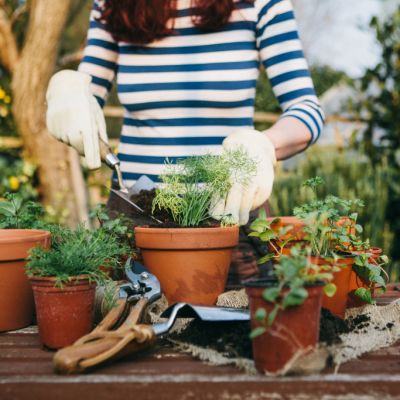The surprising mental health benefits of bird watching at home

Bird therapy is a pastime with many wellbeing effects found right outside your window.
Kim Seeling Smith and her partner, David Toyne, who’s a bit of a Dr Doolittle type, are both fascinated with birdlife.
“When we moved into our apartment in Mosman Bay, we decided to attract the magpies that we heard in the trees by the house,” Smith says.
“We bought some mince and began to put it out on the railing. It didn’t take long, and they began picking it from our hand,” she says. [Ed’s note: experts advise against feeding birds mince as it can cause nutritional imbalances].

“We also started to put seed and other food out for the lorikeets so I could get a better look at them. Now, they’re so comfortable with us that they crawl all over us. We’re very respectful though, we don’t want them to become dependent on us and we only feed to supplement their natural diet.”
Smith shares how the birds have provided them with a way to connect with nature and, especially during lockdown, they’ve been a real joy.
“The world may feel crazy and out of control, but their lives go on as normal and that’s helped me personally, put the events of the world in perspective,” she says.
A 2017 research from the universities of Queensland, Exeter and the British Trust for Ornithology found how people living in leafy or suburban neighbourhoods with more birds, shrubs and trees are less likely to suffer from depression, anxiety and stress, a result directly associated with the number of birds people could see in the afternoon.

University of Exeter research fellow Dr Daniel Cox, confirms how birds around the home, and nature in general, show great promise in preventative healthcare, making cities healthier, happier places to live.
In a newly released memoir called Bird Therapy UK-based author, Joe Harkness shares how he overcame depression and anxiety through bird watching.
“I started to take an interest in birdwatching, in 2014, as a hobby when I began to recognise just how positive I felt when immersed in the world of birds,” Harkness says.

“My worries seemed to fade into insignificance, and when I was feeling stressed, if I counteracted it with some time outside, watching them, it drifted off like birds do, a stiff breeze,” he says.
“Overall, I became aware of some relief from certain symptoms – low mood and lack of motivation – and noted elation and what I would describe as ‘ultra-positivity’. Quite simply, I started to feel a lot better.”
Renowned Australian bird guide and tour operator Luke Paterson, of NT Bird Specialists, adds how observing birds and hearing them sing or chirp can provide immense joy.
“For some people it’s also a childhood dream to finally see certain birds they only had an image from in books; and once they do it’s an exhilarating and even a euphoric moment that moves them and provides a deep sense of accomplishment.”
How to attract birds into your home

Paterson says gradually attracting birds into your property can help in their survival, as long as everything is done in moderation.
“With our fairly dry climate, simply putting out a tray of clean water – less than two-inches deep, allows birds to come in, have a drink and even splash around enjoying a bath,” Paterson says.
“If your bird bath is deeper, adding some stones or twigs offer birds easier access to drink and a choice of water levels,” he says.
In regards to feeding birds, Paterson advises to use only good-quality bird seed, rather than breadcrumbs or other human food not naturally part of their diet, which can eventually make them sick.
“Moderate quantities of blended bird seed in small sheltered feeders offers a fantastic opportunity to attract and see smaller species such as finches and mannikins and deter larger more aggressive species like parrots and pigeons,” Paterson says.
Mostly, it’s important to keep feeders thoroughly clean and out of reach of cats and other predators.
Another important way you can draw birds into your space is to include native species of plants in your garden.

“A lot of the natural habitat is being lost because of housing developments, so by reintroducing native flowers and insects into our garden we’re inviting the native birds back into our human environments,” Paterson says.
Dense native shrubs will make smaller birds feel safe from predators, and the elements, and also create great hiding and nesting spots.
“As a bonus, planting nectar-producing plants in moderation, such as bottlebrush and grevilleas, will attract nectar feeding birds like lorikeets and honeyeaters and the insects in the garden will draw in insectivorous birds like fairy wrens, willy wagtails and fly catchers.”
How to start observing birds
A soft way to introduce yourself to bird watching is to simply begin observing the birds that come into your personal space.
“Become aware of the seasonal patterns and notice which birds are coming in at different times of the year,” Paterson says.
“To enjoy it even more and see the detail of the birds get yourself a set of binoculars, a bird identification field guide, and even log the different species and sightings on an app like Birdata,” he says.
Once you’re ready to explore farther afield, joining a local bird-watching group or an accredited guided tour can help you additionally identify and photograph wild birds.
“It’s a life enhancing experience to join others that share a passion for birds,” he says.
We recommend
States
Capital Cities
Capital Cities - Rentals
Popular Areas
Allhomes
More










